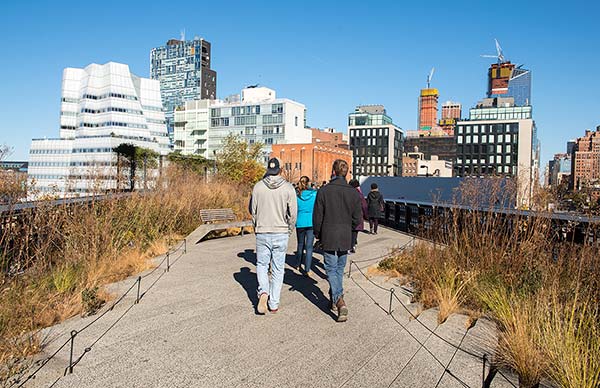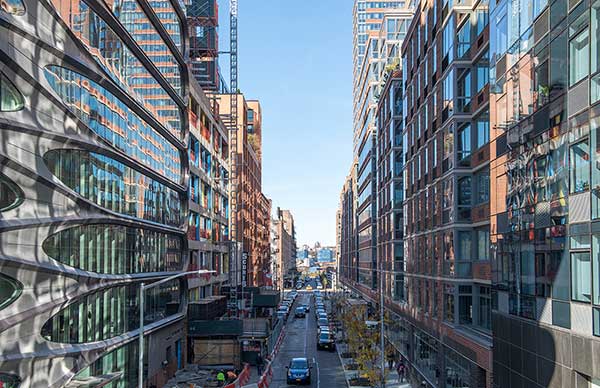
High Line
The High Line is the nation’s first elevated park, a piece of the past repurposed.
“I chose environmental engineering in order to help protect and preserve our way of life as well as the planet we live on.” – Benjamin Siegel
Back in the 1930s, trains delivered cargo to Manhattan’s industrial district via the High Line, which cuts through blocks of businesses and residential units.
These rails haven’t carried a train since 1980.
Since then, efforts were made to demolish the High Line — but residents succeeded in turning the old elevated track into a public park. The park features a landscape of green grass and various plants and an irrigation system.
Water drains between planks and plant beds and composting facilities are located at the park.
“The High Line illustrates the whole concept of an evolving city and highlights industrial New York changing to a residential and office city,” Westerink says. “Repurposing this rail line into a beautiful space changed the neighborhood — now a neighborhood to some of the most iconic residential buildings in the city. All of a sudden, it’s a really peaceful space. You are above traffic. You can walk through the heart of that part of the city in a little strip of green.”

Engineers, he adds, must take into account how their buildings interact with the soils they are built on and how they interact with the environment around them. “Any kind of structure, any size, whether it’s a bridge, a building, a train station — has to be supported by the ground below it. It is a critical part of the design and often requires sophisticated engineering testing and analysis.”
Students discuss various aspects of soils and foundation engineering as well as environmental engineering with engineers at Langan, which works on many projects in the city including the High Line, One Vanderbilt, and St. Patrick’s Cathedral.
The firm analyzes how the soils and underlying rock formations will carry the structure and estimate the degree of settling and the ability to keep the structure from overturning, as well as how the structure and the construction process will impact adjacent structures and sites.

A city like New York presents constant problems of what its industrial users from previous generations put into the ground. Toxins, especially volatile ones, can penetrate through concrete, make the air within the building hazardous for its occupants, and make them sick. Foundation systems can also allow toxins to spread from one soil strata to another, worsening an existing pollution problem.
“Coming from an area full of wide open space, the High Line was an oasis of plant life and fresh air in the city,” says Benjamin Siegel. “Walking along and seeing children who have lived their entire lives in the concrete jungle being able to run around on a patch of grass puts everything in perspective. I chose environmental engineering in order to help protect and preserve our way of life as well as the planet we live on. Seeing the impact the High Line had on the people who were visiting reaffirmed that mission.”